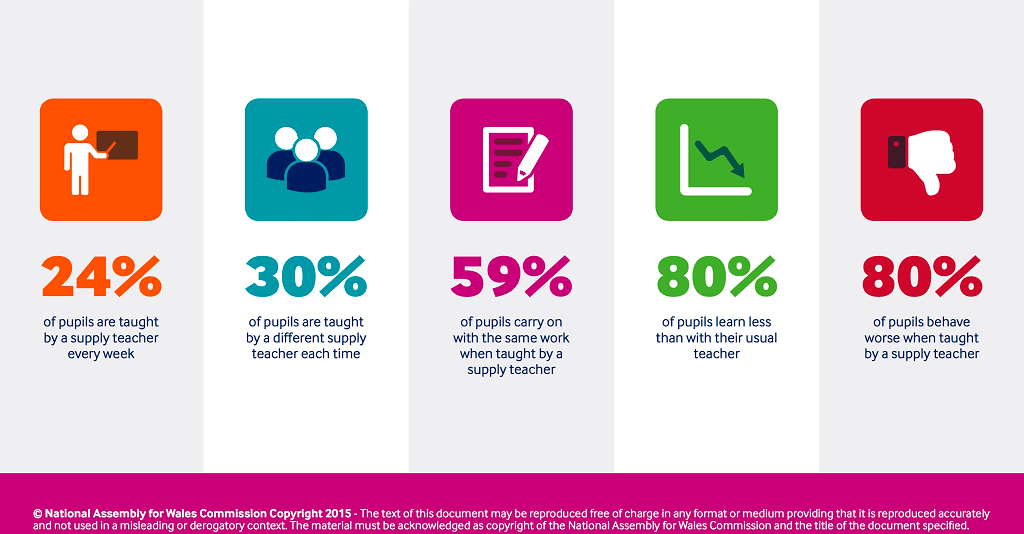- Salaries for 5 teachers (inc. employers’ NI) £215,000
- Discretionary (“materials”) budget £1,500
There is a third item that is usually accounted separately, cost of cover staff. If the average teacher is off for 1 week per year – whether for illness, external training or other reasons, they are covered by a supply teacher costing the school around £200/day.
- £200 * 5 teachers * 5 days per year = £5,000/year.

Cover staff are notoriously poor value. Not their fault; it’s just really hard to teach kids you don’t know. So why do we keep spending this way? In my view, it is because the wrong person controls the cover budget. A centralised cover budget is inflexible; you need a rule for applying it that works in all circumstances; and that rule is generally “replace absent teachers 1:1 with supply teachers”.
What if, instead, this money was handed to the HoD as part of the discretionary budget? Suddenly, that jumps to £6500/year. Could it be spent more intelligently, to deliver a better education for the kids by the end of the year?
I think it could. The solution I am going to propose is by no means the only possibility, just the one with which I am most familiar.
10+ years ago, at Thomas Telford School, I observed students engaged in independent learning in a computer room set aside for the purpose. No teacher in sight. That resource probably cost £2-3,000 per seat, but these days educational laptops can be had for less than £200 each. A class set costs at most £6,000. Used as an alternative to expensive but ineffective supply teachers, they would pay for themselves in scarcely more than a year.
But once you have got them, you use them for far more than just cover work. Here is where the huge saving comes. Government research shows that teaches work 50 hour weeks, and spend 17% (8.5hrs/wk) of their time marking. Nearly all of that marking can now be automated, provided students’ work is in digital form. Once you have the budget, this suddenly becomes possible.
- Devolve control of the cover budget to individual departments.
- Use it to buy sets of laptops, instead of hiring supply teachers.
- Use the laptops to make sure that all work is digital, and gets auto-marked. Expunge 8 hours/week of marking from teachers’ schedules.
- Use the teacher time saved creatively to solve those aspects of the cover problem that are not solved by the laptops.
How you will use that extra 8 hours per week (per teacher!) is beyond my purview – but almost anything you do with it is going to lead to better exam results.

Leave a reply to Clare snik Cancel reply